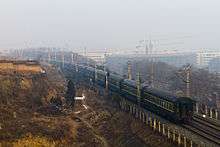Longhai Railway
| Longhai Railway | |||||||||||||||||||||||||||||||||||||||||||||||||||||||||||||||||||||||||||||||||||||||||||||||||||||||||||||||||||||||||||||||||||||||||||||||||||||||||||||||||||||||||||||||||||||||||||||||||||||||||||||||||||||||||||||||||||||||||||||||||||||||||||||||||
|---|---|---|---|---|---|---|---|---|---|---|---|---|---|---|---|---|---|---|---|---|---|---|---|---|---|---|---|---|---|---|---|---|---|---|---|---|---|---|---|---|---|---|---|---|---|---|---|---|---|---|---|---|---|---|---|---|---|---|---|---|---|---|---|---|---|---|---|---|---|---|---|---|---|---|---|---|---|---|---|---|---|---|---|---|---|---|---|---|---|---|---|---|---|---|---|---|---|---|---|---|---|---|---|---|---|---|---|---|---|---|---|---|---|---|---|---|---|---|---|---|---|---|---|---|---|---|---|---|---|---|---|---|---|---|---|---|---|---|---|---|---|---|---|---|---|---|---|---|---|---|---|---|---|---|---|---|---|---|---|---|---|---|---|---|---|---|---|---|---|---|---|---|---|---|---|---|---|---|---|---|---|---|---|---|---|---|---|---|---|---|---|---|---|---|---|---|---|---|---|---|---|---|---|---|---|---|---|---|---|---|---|---|---|---|---|---|---|---|---|---|---|---|---|---|---|---|---|---|---|---|---|---|---|---|---|---|---|---|---|---|---|---|---|---|---|---|---|---|---|---|---|---|---|---|---|---|---|
| Line length: | 1,759 km (1,093 mi) | ||||||||||||||||||||||||||||||||||||||||||||||||||||||||||||||||||||||||||||||||||||||||||||||||||||||||||||||||||||||||||||||||||||||||||||||||||||||||||||||||||||||||||||||||||||||||||||||||||||||||||||||||||||||||||||||||||||||||||||||||||||||||||||||||
| Track gauge: | 1,435 mm (4 ft 8 1⁄2 in) | ||||||||||||||||||||||||||||||||||||||||||||||||||||||||||||||||||||||||||||||||||||||||||||||||||||||||||||||||||||||||||||||||||||||||||||||||||||||||||||||||||||||||||||||||||||||||||||||||||||||||||||||||||||||||||||||||||||||||||||||||||||||||||||||||
| Stations and structures | |||||||||||||||||||||||||||||||||||||||||||||||||||||||||||||||||||||||||||||||||||||||||||||||||||||||||||||||||||||||||||||||||||||||||||||||||||||||||||||||||||||||||||||||||||||||||||||||||||||||||||||||||||||||||||||||||||||||||||||||||||||||||||||||||
Legend
| |||||||||||||||||||||||||||||||||||||||||||||||||||||||||||||||||||||||||||||||||||||||||||||||||||||||||||||||||||||||||||||||||||||||||||||||||||||||||||||||||||||||||||||||||||||||||||||||||||||||||||||||||||||||||||||||||||||||||||||||||||||||||||||||||
The Longhai railway (simplified Chinese: 陇海铁路; traditional Chinese: 隴海鐵路; pinyin: Lǒnghǎi Tiělù), formerly romanized as the Lunghai Railway, is a major arterial east-west railway in China. It runs from Lianyungang, Jiangsu on the Yellow Sea to Lanzhou, Gansu through the provinces of Jiangsu, Anhui, Henan, Shaanxi, and Gansu, covering a total length of 1,759 kilometres. The line is named after Gansu, also known as Long (陇) in Chinese and Lianyungang's previous name, Haizhou.[1] The Longhai Line is one of the busiest Chinese railways. It has dual tracks throughout the whole line, and the lines between Xuzhou, Jiangsu and Lanzhou, Gansu has been electrified.
History
The Longhai Railway was built over the course of half a century by four different governments of China: the Qing Dynasty, Beiyang Government, Nationalist Republican government and the Communist government of the People's Republic.
The first section of the railway, entirely within Henan, from Kaifeng to Luoyang was built from 1905 to 1909 by a venture between the Qing Dynasty and a Belgian joint-stock company backed by France and Russia.[1] This line, known as the Bianliang-Luoyang Railway, began operation on January 1, 1910.[1]

The line was extended eastward to Xuzhou in 1916 and to Haizhou in 1923 with Dutch financing.[1] In the west, the line was extended to Lingbao, Henan in 1927 with Belgian financing.[1] After the Northern Expedition, the Nanjing-based Republican government took control of construction and extended the line further west to Tongguan, Shaanxi in 1931, to Xi'an in 1934, to Baoji, Shaanxi in 1936 and Tianshui, Gansu in 1945.[1]
Construction of the Tianshui to Lanzhou section, entirely within Gansu, broke ground in May 1946 but was halted by Chinese Civil War, then resumed under the People's Republic in April 1950 and was completed in July 1953.[1] At this time, the entire Longhai Railway entered into operation.[1]

In the late 1950s through early 1960s, new railways were built from Lanzhou to the west: the Lanxin Railway to Xinjiang (later connected to Kazakhstan) and the Lanqing Railway to Qinghai (later extended to Tibet).
From 1956 to 1970, the section between Zhengzhou, Henan to Baoji, Shaanxi was upgraded to the dual-track line. During the same time, in Henan the line near Sanmenxia was re-routed due to the Sanmenxia Reservoir Project. Zhengzhou to Shangqiu section was converted to dual-track in 1980.
The railway is a central section in the New Eurasian Land Bridge.
Cities and rail junctions along route
- Shangqiu: Beijing-Kowloon Railway
- Kaifeng
- Zhengzhou: Beijing-Guangzhou Railway
- Luoyang: Jiaozuo-Liuzhou Railway
- Sanmenxia
- Tongguan: Datong-Puzhou Railway
- Huashan
- Weinan
- Xi'an: Nanjing-Xian Railway, Houma-Xian Railway, Xian-Ankang Railway
- Xianyang: Xianyang-Tongchuan Railway
- Baoji: Baoji-Chengdu Railway

High-speed rail line parallel to the Longhai
The Xuzhou-Lanzhou High-Speed Railway, a high-speed rail line parallel to the Longhai Line, is being constructed. The Zhengzhou-Xi'an section opened in February 2010.
Gallery
 Longhai Railway outside the city walls of Xi'an.
Longhai Railway outside the city walls of Xi'an.
 Station platform at Huanshan.
Station platform at Huanshan. Railway tracks in Xianyang
Railway tracks in Xianyang Railway tracks in Baoji
Railway tracks in Baoji
 Two HXD1-hauled freight trains meet near Yuanlong
Two HXD1-hauled freight trains meet near Yuanlong
See also
| Wikimedia Commons has media related to Longhai Railway. |